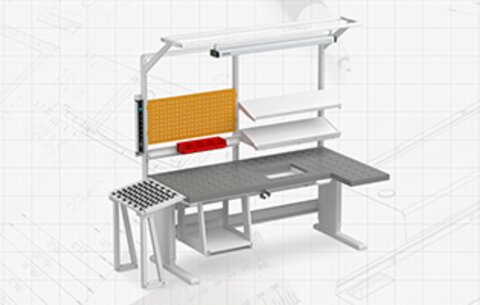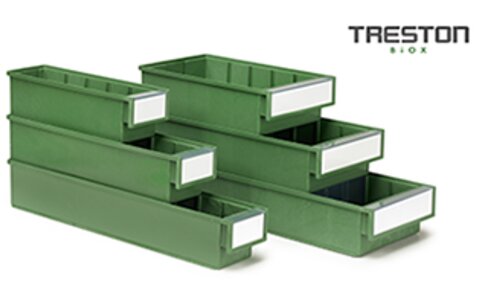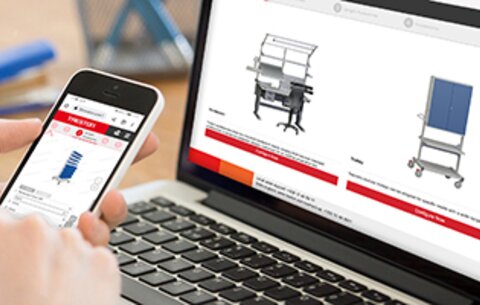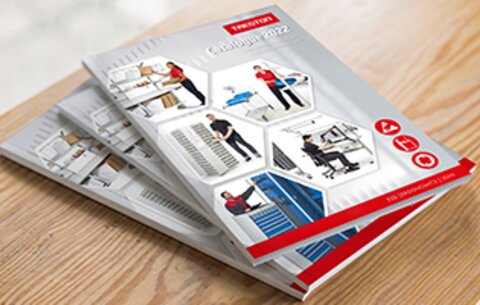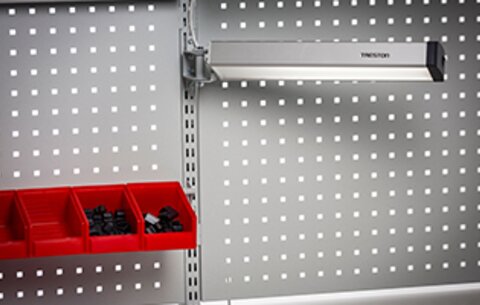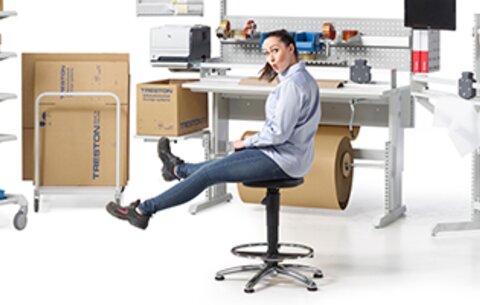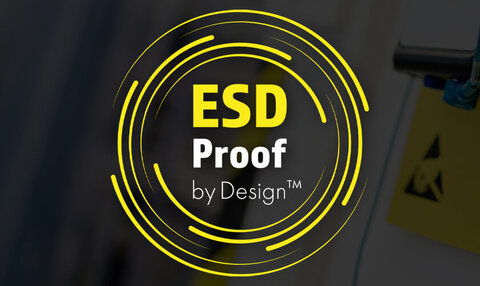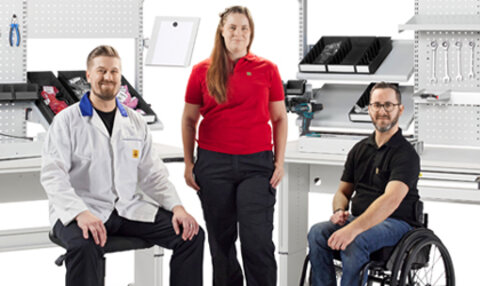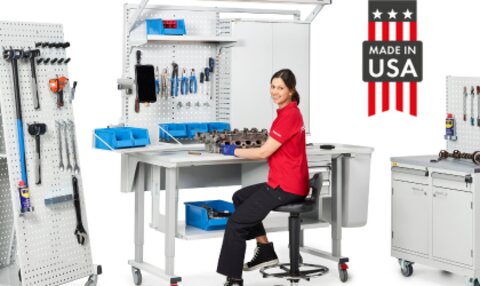

HOW TO: Choose the Best Work Surface for Your Laboratory
Treston’s National Sales Manager for the Laboratory Division, Greg Ramey, breaks down the most popular work surface types to help you select the one that is best for you.
There are many surface types available here at Treston, each with its own pros and cons. To decide which workbench or surface is right for your space, you need to understand your requirements and choose the top that best meets those needs. We encourage you to consider the following materials as you explore our online inventory.
Stainless Steel (Brushed or Polished)
Stainless steel usually carries a classification number that is associated with the chemical treatment the material receives (ie: 304, 316, etc). The higher the number, the more intensive the treatment and higher the cost. The final purchase should be based on the lab application to which the material will be applied. Stainless steel is a tremendous surface for cleanability. It should be added that stainless steel will scratch and is not indestructible. It will not support microbes in the long term. However, polished stainless steel is easier to clean than brushed.
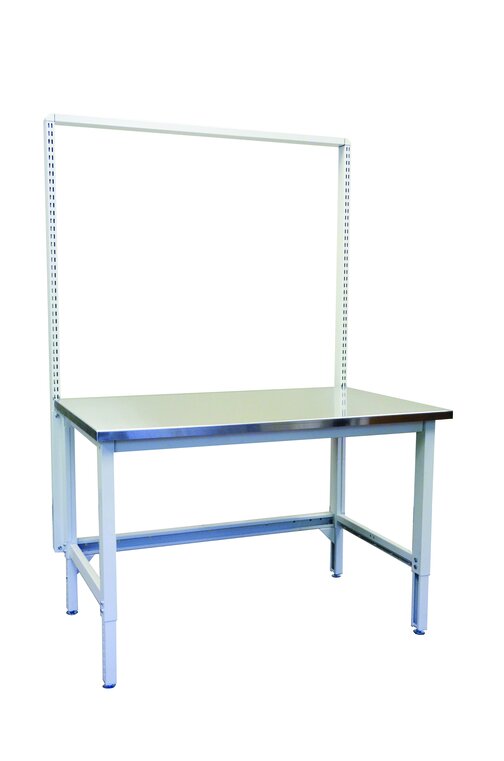
Stainless steel is NSF (National Sanitation Foundation) certified. This certification includes the approved ability for the material to respond favorably to a washdown situation. Brushed stainless steel has tiny peaks and valleys referred to as “relief”. Micro pooling could occur with poor housekeeping and depending upon the chemicals involved, could set up a corrosive event. Stainless steel is more expensive than most other work surfaces. Installed costs can run from $80 - $150 per sq ft depending upon the installation desired. Stainless steel can be field welded in its final resting place or may be mechanically bolted together at the joints. Field welding is considerably more expensive but provides a more continuous, smooth surface.
Ceramic
Ceramic material provides an excellent work surface and is widely used in Europe. It is remarkably easy to clean and maintain. Since it has been annealed in kiln heat, the finish is smooth with a minimum of relief. Ceramic is remarkably tough to scratch and never needs sealing. Its non-porous surface resists staining and prevents absorption, thus is stain resistant. What are the negatives? The ceramic material is more brittle than phenolic resin or high-pressure laminate. During shipment and installation, extreme care should be given to care of the material. The installed cost of ceramic is $65 - $110 per sq ft depending upon the various colors offered.
Solid Surface
Solid-surface material such as Corian, Avonite, Wilsonart, etc, is a molded material that has a polyester or epoxy base and provides a decorative, seamless work surface. Solid surface has not been traditionally known for pure lab applications because of the prominent use of polyester as the vehicle for filler material. Polyester is susceptible to a number of chemical attacks that expose the surface to discoloration and corrosive degradation. Solid surface materials are remarkably softer than other materials and can be post-formed or shaped in many ways under heat and pressure. The installed cost is $60 - $110 per sq ft.
Epoxy Resin
Epoxy resin is a man-made material that functions like stone but is chemically a plastic. It has traditionally been the valued successor to soapstone. Since soapstone has become more difficult to locate and quarry, the market has accepted epoxy resin as the material of choice, especially when corrosive chemicals or high heat are involved in the application. Currently, epoxy resin is mixed, poured, and molded in brushed aluminum molds as well as stainless-steel molds. Micro pooling can occur as well when brushed aluminum molds are used. Good housekeeping is imperative for best results. What are the negatives? Epoxy resin can have thickness variations, warpage, scratches, and color variations. Epoxy resin also has a low coefficient of thermal expansion which makes it susceptible to fast, extreme temperature variations. For example, it is not recommended for dry ice dissipation. The installed cost of Epoxy resin is $40 - $80 per sq ft.
Phenolic Resin
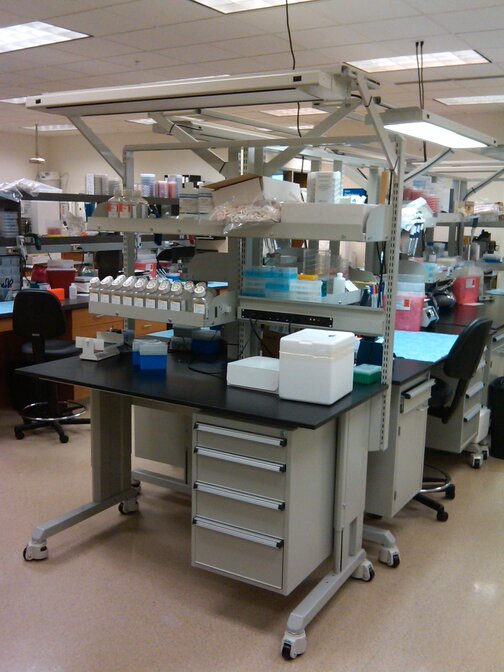
Phenolic resin is a product that incorporates either wood pulp fiber or heavy paper sheets, coated or submerged in phenolic resin, and formed under heat and pressure into monolithic sheets of various thicknesses. Phenolic resin has grown in popularity due to its chemical resistivity, ease of installation, durability, and decorative finishes. Phenolic resin is recommended for instrumentation labs, diagnostic, and light-duty lab applications. Phenolic resin offers good cleanability. Because it is not a self-extinguishing product, it is not recommended for fume hood work surface applications. What are the negatives? Although uncommon, Phenolic resin has been known to delaminate in certain environments. The installed cost of Phenolic resin is $40 – $65 per sq ft.
High-Pressure Plastic Laminate
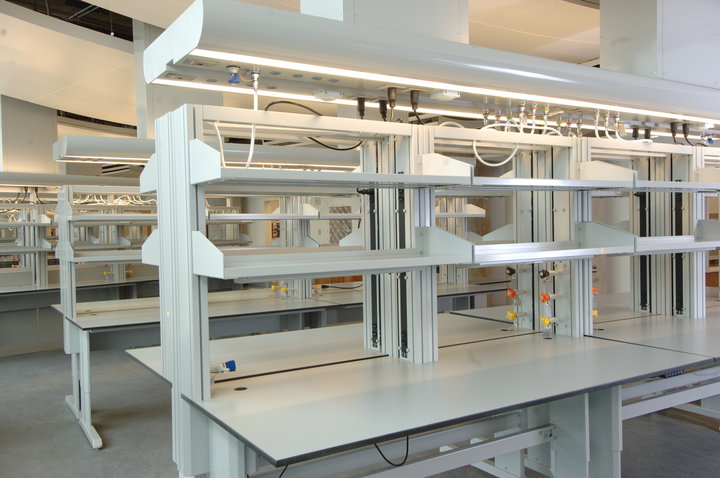
HPPL has a laminated body with a decorative surface of treated plastic laminate. This product is predominantly used in residential construction but has a history of being provided in laboratories as a low-cost alternative to the other options. The plastic laminate outer layer is glued to a particleboard or plywood substrate. The work surfaces are joined by mechanical means (t-bolts) and silicone adhesive. HPPL offers good cleanability. What are the negatives? Delamination is a liability, especially where liquids are present. The installed cost of HPPL is $25 - $40 per sq ft.
Find The Right Work Surface Material at Treston
Each work surface type mentioned above has its advantages and disadvantages, and the ultimate decision will depend on the needs of the lab. Whether you require multiline material flow options or a concept workbench, our online inventory is here for you to explore and conveniently order from.
For more information on selecting the best worksurface for your lab, or for Treston worksurface product options, please contact a Treston representative!

